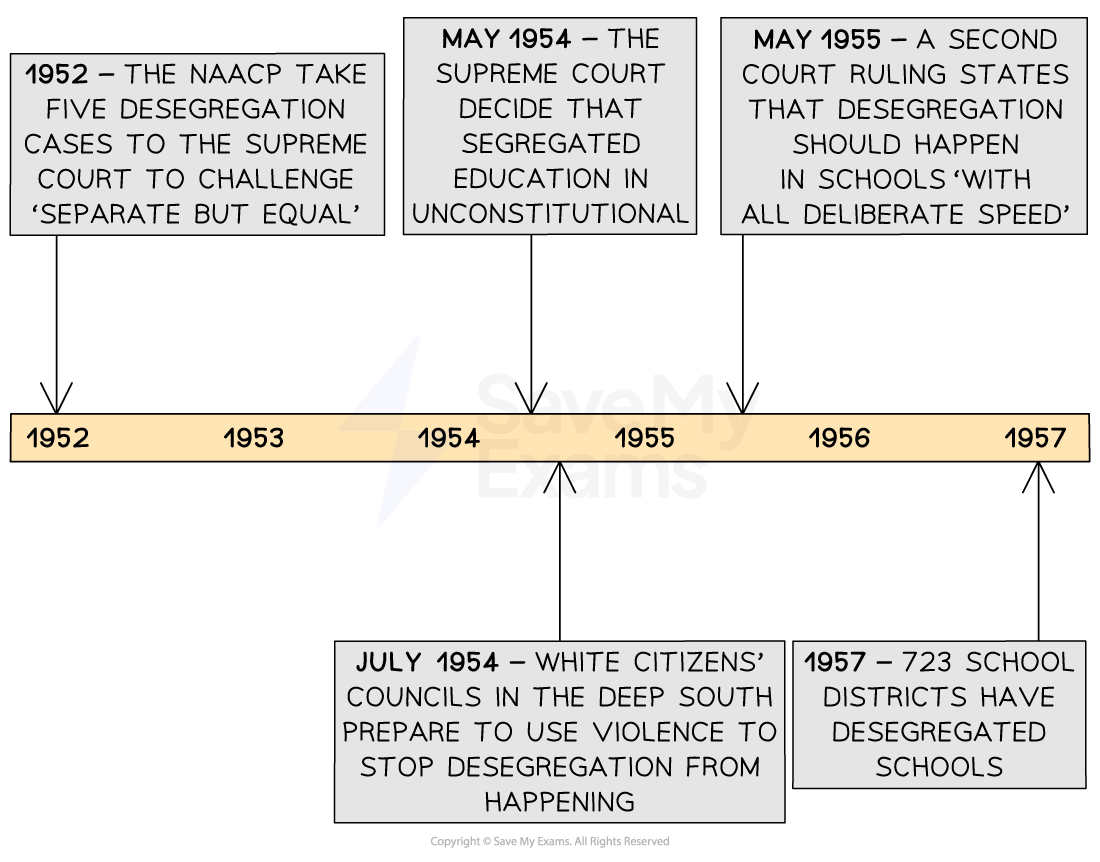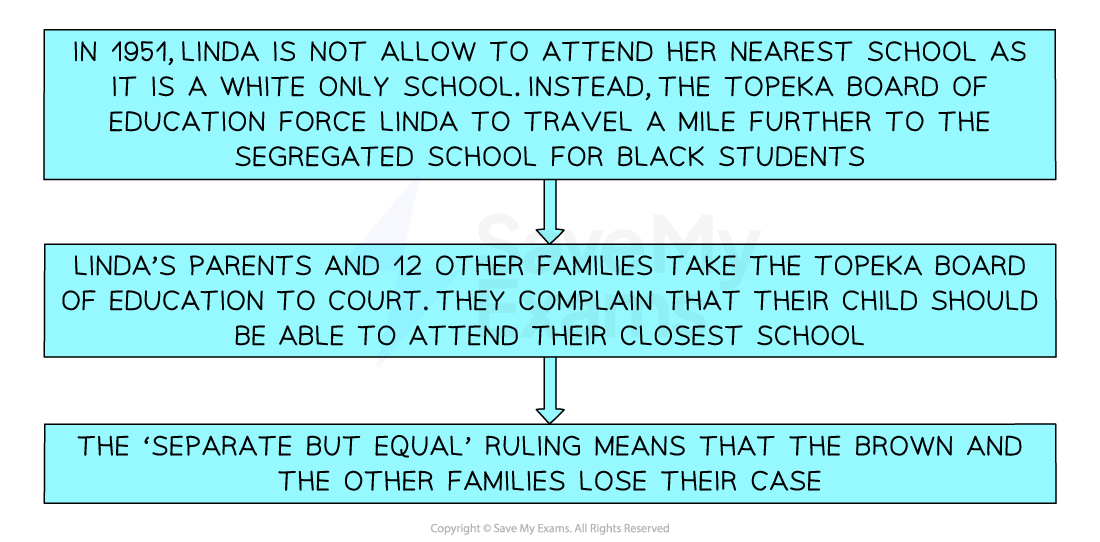Developments in Education - Brown vs Topeka, 1952 (Edexcel GCSE History): Revision Note
Exam code: 1HI0
Timeline

Summary
The policy of segregation in education had been established in law in the US since the Plessy v. Ferguson court case in 1896. This was overturned in 1954 by the Brown v. Topeka case. The Supreme Court ruled that segregation broke the constitutional law. In the short term, segregation continued as many people in the South reacted angrily to the judgement. In the long term, it helped civil rights campaigners in their struggle to end segregation in other areas of life.
The impacts of Plessy vs Ferguson on education
The Plessy v. Ferguson court case of 1896 was significant because the Supreme Court of the United States of America ruled that racial segregation did not break the Constitution
It ruled that the facilities available to both groups had to be ‘separate but equal’
This affected education as Black children went to separate schools from White children
The schools that Black children attended had less funding and poorer facilities than those attended by white children
Who was Linda Brown?
Linda Brown was a Black student from Kansas who had to walk past a school for White students before she reached her nearest ‘Blacks only’ school
She believed this was unfair
With the support of the NAACP, she took the local Topeka Board of Education to court

Brown vs Topeka, 1954
The case, Brown v. Topeka, went to the Supreme Court
Brown’s lawyers argued that segregated education led to poorer results, mental stress and lower self-esteem for Black students
The lawyers stated that, as a result, segregation went against the 14th Amendment of the Constitution; ‘all citizens must receive equal protection’
In December 1952, the Supreme Court voted to hear more legal advice on the case
They avoided making a ruling
The original judge trying the case died
His replacement was Earl Warren. He disagreed with segregation
On 17 May 1954, the Supreme Court announced that it agreed with their arguments
Amended extract from the closing judgement of the Supreme Court
“Separating White and Black children in schools had a detrimental (damaging) effect upon Black children…We conclude that in the field of public education the doctrine of ‘separate but equal’ has no place. Separate educational facilities are inherently unequal.”
Short-term impact of Brown vs Topeka
Brown v. Topeka overturned Plessy v. Ferguson, meaning that segregation had been legally judged as breaking the United States Constitution
However, it did not give a deadline for schools to desegregate but stated it should happen ‘at the earliest possible speed’
As a result, three years after the Supreme Court judgement, although 723 school districts had desegregated, 2.4 million Black children were still being taught in ‘Blacks only’ schools
Victory in the Brown v. Topeka case also led to:
A backlash of intimidation against civil rights campaigners
NAACP membership declined by 40% by 1957
The Ku Klux Klan experienced an increase in popularity
White Citizens Councils (WCC) were established to prevent schools from desegregating
The Supreme Court’s decision was too late for Linda Brown. She went to a junior high school. Junior high schools were already desegregated in Kansas
Long-term impact of Brown vs Topeka
Victory in Brown v. Topeka had set a legal precedent, which meant other state segregation laws could be challenged in the courts
Segregation in education had been judged to break Constitution Law.
Therefore, segregation in transport, restaurants, cinemas etc must also break the Constitution
Black students and teachers faced racism and violent attacks in integrated schools
Well-run Black-only schools were shut down
Students had to move to other schools and teachers lost their jobs
It also led to many White Americans moving away from areas where Black Americans lived
This meant there was continued segregation on an unofficial basis
Examiner Tips and Tricks
Connectives are extremely useful when answering ‘Explain why’ or causation questions. Words and phrases such as ‘Therefore,…’ ‘As a result,…’ ‘Consequently,…’ and ‘This led to…’ highlight to the examiner that you are explaining why something happened

Unlock more, it's free!
Did this page help you?